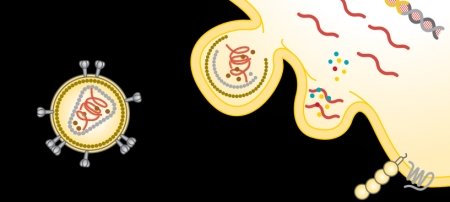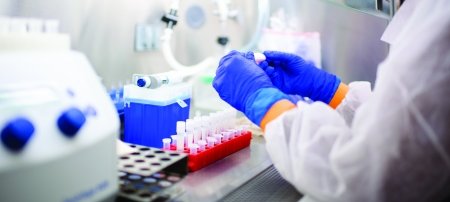Testing for nutritional deficiencies in blood can be invasive and expensive. A team led by Michigan Technological University explored what it takes to switch to tears instead.
Babies cry easily, but those tears may help shed light on the role and potential uses of vitamins in tears. Maryam Khaksari, a research specialist at the Chemical Advanced Resolution Methods (ChARM) Laboratory at Michigan Tech, is the lead author of a paper on the subject recently published in Experimental Eye Research (DOI: 10.1016/j.exer.2016.12.007).
"Our goal was to seek the viability of establishing measurable vitamin concentrations in tears for nutritional assessments,” Khaksari says. "Your body cannot manufacture vitamins, and vitamins reflect available food sources in your body. That's what makes them good indicators of nutritional health."
Full of Potential
The work was part of Khaksari's dissertation in the Medical micro-Device Engineering Research Lab at Michigan Tech. The team is led by Adrienne Minerick, the dean of research and innovation in the College of Engineering as well as a professor of chemical engineering at Michigan Tech.
"This project was the first step that proved vitamins are detectable in tears, that they do correlate with blood levels," Minerick says. "Next we want to engineer a portable, lab-on-a-chip device relying on a minimally invasive sample from tears to assess nutrition."
With this goal in mind, Khaksari worked with a local team under Minerick's guidance to study the connections between infant vitamin levels and their parents' levels.
Full of Vitamins
Previously, the presence—and measurability—of tear nutrients was unclear. After all, there are no blood vessels that connect through the cornea, and blood transport nourishes most organs. Yet the old stories about carrots have some truth: eyes do need vitamin A along with other nutrients.
"We hypothesized that nutrients are transferred to the living cells of your cornea through your tears," Khaksari says, adding that past studies have shown that people blink more when they have vitamin deficiencies, which are currently only tested for with blood samples. "We would like to translate the information we have for blood to tears. In this paper, we did show that there are correlations between vitamin concentrations in tears and blood—so it's possible."
The challenge is that tears are a complex mixture, which makes measuring vitamins in them difficult.
Full of ChARM
Khaksari focused on vitamins A, B and E to assess; she did so using liquid chromatography and mass spectrometry with the help of Lynn Mazzoleni, an associate professor of chemistry and co-director of the ChARM Laboratory. Mazzoleni oversees a new mass spectrometer with the capability of measuring mass in femtograms (0.000000000000001 grams), and the new equipment will put to use as the tears characterization project moves forward.
"We absolutely need ultrahigh resolving power to see the molecules in extremely complex mixtures in order to learn more about various natural and biological systems," Mazzoleni explains.
That sensitivity is crucial when connecting it to human health. As the authors write, nutritional deficiencies are most often treated by symptoms, "however, symptom-presentation substantially lags behind the chemical level deficiency."
Full of Health
In children the effects of nutritional deficiencies can be lifelong, which is part of the reason Khaksari collaborated with Dr. Colleen Vallad-Hix at UP Health System – Portage. They focused on babies with a 100 percent liquid diet of formula or breastmilk to understand the connection between parent nutrition and infant nutrition. Also, nutritional data gleaned from the parents help reveal the family's access to healthy foods.
They tested tear samples and blood samples from 15 four-month-old infants and their
parents. In general, water-soluble vitamins were higher in infants and fat-soluble
vitamins were higher in parents—notably, mothers tended to be more deficient across
the board. Generally, there is a connection between parents and babies and the team
showed a correlation between vitamins E and B. Formula-fed babies were the exception,
with notably higher levels of B vitamins. The work is preliminary but shows promise
for laying out trends in tear vitamin levels.
Michigan Technological University is an R1 public research university founded in 1885 in Houghton, and is home to nearly 7,500 students from more than 60 countries around the world. Consistently ranked among the best universities in the country for return on investment, Michigan's flagship technological university offers more than 120 undergraduate and graduate degree programs in science and technology, engineering, computing, forestry, business, health professions, humanities, mathematics, social sciences, and the arts. The rural campus is situated just miles from Lake Superior in Michigan's Upper Peninsula, offering year-round opportunities for outdoor adventure.







Comments